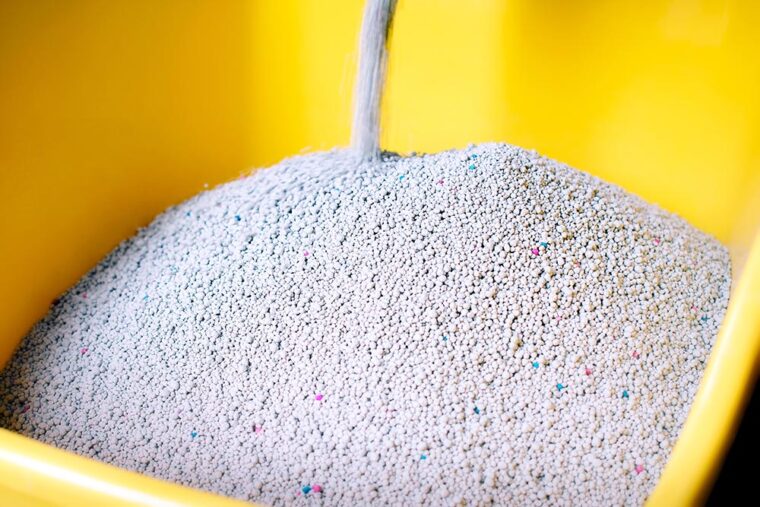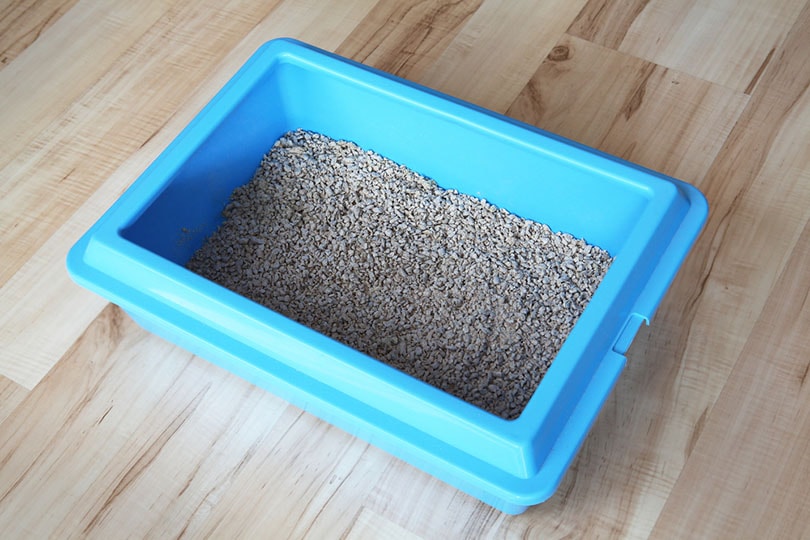
Cleaning the litter box is one of the least glamorous and enjoyable parts of owning a cat. It’s smelly, inconvenient, and an overall unpleasant experience. Then, once you’ve emptied the box, you’re left with a bag of used litter clumps that you get to hang onto, either in your home or your outdoor trash, until the next trash pickup day. This leaves a yucky smell that is only exacerbated by hot weather. If you live somewhere where daytime temperatures reach above 90°F, you know exactly what we’re talking about.
Like most of us cat owners, you’ve likely tried to find better ways to manage your cat’s dirty litter. Obviously, people use the toilet and flush our worries away, so is it possible to do this with your cat litter also? After all, how convenient would it be to just dump your cat litter into the toilet and not worry about it again?
If you can or can’t flush the cat litter it will all depend of the type of litter you use. Here’s what you need to know about flushing cat litter.
Can You Flush Cat Litter?
It depends on the type of cat litter. Traditional clay litters and other types of clumping litters are not appropriate for flushing because they can clump inside of your pipes, causing major problems down the road that are far worse than dealing with some dirty cat litter regularly.
Any type of cat litter that cannot biodegrade, which includes all types of clay litter, should not be flushed because they are simply entering the water system without a chance of breaking down and with the great potential of settling and building up in pipes. This even applies to non-clumping litter varieties, believe it or not.

Flushable Litter Is Okay, Right?
There are a variety of litters on the market today that promise to be flushable. These litter types are biodegradable litters made from things like sawdust, corn, and even tofu. It’s usually written right there on the bag that the litter can be flushed, and sometimes they even say the product is safe for septic systems and sewer systems. So those are okay to flush, right?
Well, it might surprise you to know that there are legitimate reasons to not flush cat litter, no matter how safely flushable it is made to be. The simplest explanation for this is that your septic system and the sewer systems are not made to process cat litter, even biodegradable, flushable cat litter. When it comes to your toilet, stick to the 3 P’s: poo, pee, and paper, preferably all part of human waste and not pet waste.
Are There More Serious Risks With Flushing Cat Litter?
The more complex explanation of why you shouldn’t flush cat litter is that sewer processing plants are not created to process anything other than human waste. They are not made to process pet waste, including cat waste. The EPA has declared cat waste to be a pollutant, and it has been shown to negatively impact water quality in a way that impacts drinking water, plants, fish and other water-dwelling animals, and land animals, including livestock.
The other huge risk associated with flushing cat litter is that cats can shed a parasite in their feces called Toxoplasma gondii. Your cat could carry this parasite without you realizing it. This parasite causes an infection called Toxoplasmosis, which can cause body aches, muscle pain, fever, confusion, seizures, shallow breathing, and headaches.

For most healthy people, the infection goes unnoticed because our bodies can carry the parasite without developing signs of disease. However, people who are immunocompromised are highly susceptible to becoming seriously ill with Toxoplasmosis. While Toxoplasmosis is treatable with medications, it can be deadly for people with immune systems that aren’t prepared to fight the parasitic infection. Even for healthy people, this infection can last for months.
Cat litter and waste is such a problem that some states have even made it illegal to flush cat litter and waste. The prevalence of flushable cat litters has led to a significant increase in the number of people flushing their cats’ waste, which means that more people are unintentionally and unknowingly negatively impacting the environment and potentially spreading a serious parasite via the water system.
In Conclusion
While some cat litters claim to be flushable, it is not advisable to flush any cat litter, no matter how flushable and eco-friendly it is. Most plumbing systems are not cut out to handle cat litter, even the biodegradable types, so flushing your cat litter can lead to damage to your plumbing system over time. It can even lead to damage of sewer systems and sewer treatment plants. Cat litter and cat waste are quickly becoming a major problem in some areas, which is decreasing the cleanliness of drinking water, negatively impacting the ecosystem, and causing dangerous infections in some people. As inconvenient and unpleasant as it may be, it’s best not to flush your cat litter.
Featured Image Credit: Seika Chujo, Shutterstock







